Idea by
Dmytro Isaiev
Call for ideas 2019
Himalayan crossroads
Himalayan crossroads
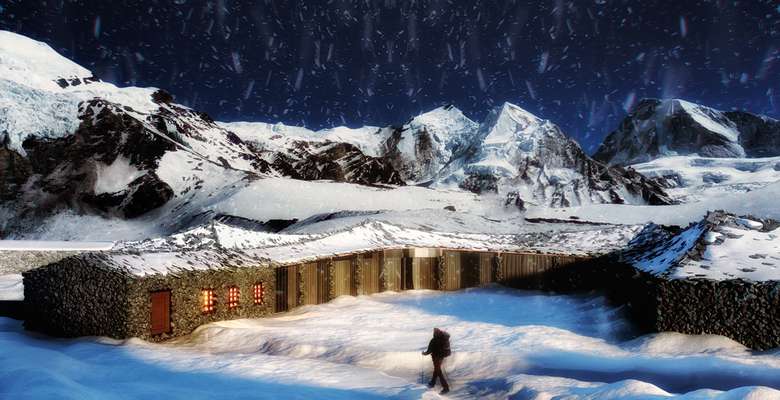
- Systemic changes
We live in an era where places considered virtually unreachable 60 years ago now can be reached in a matter of days. The world becomes small and homogeneous.
Sagarmatha National Park in Nepal is home to the highest peak in the world, Mount Everest. The 65-kilometer trek route to the Everest Base Camp has become a major tourist attraction drawing tens of thousands of people every year. However, this rise in popularity has triggered a change in the traditional lifestyle of local communities. The previously self-dependent and self-sufficient villages along the route, have turned into resting places for tourists.
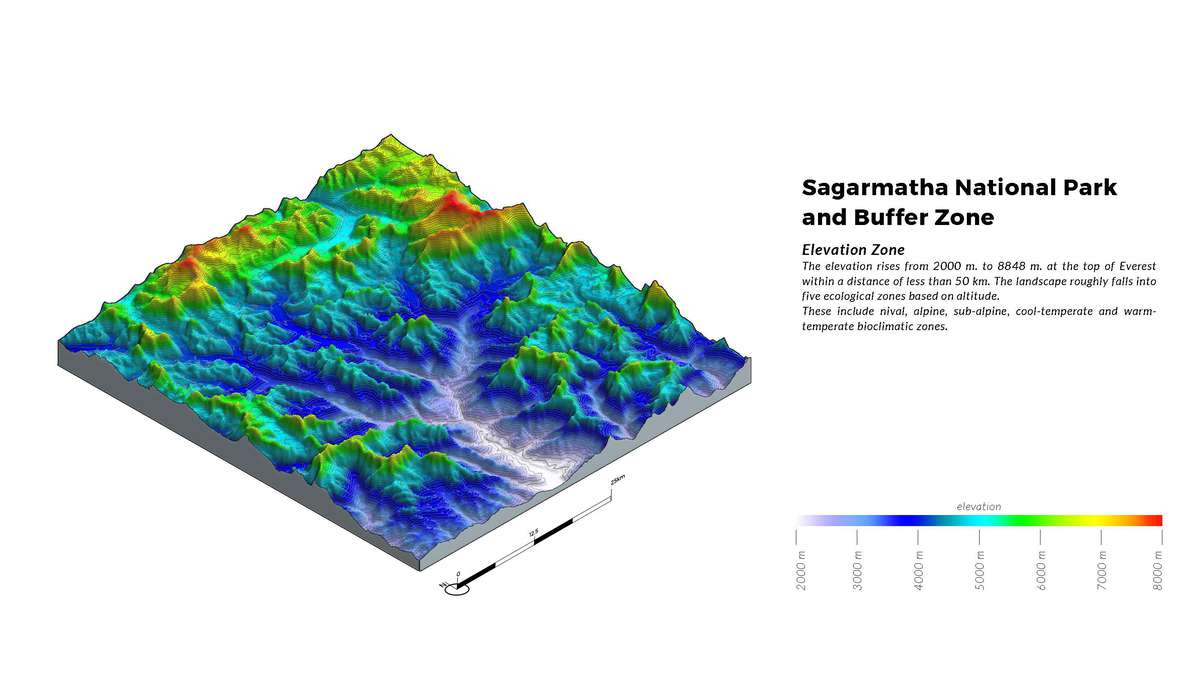
Flat terraces are literary main wealth here. Traditionally locals used to grow rice and potatoes here, but now they are occupied by hotels designed to accommodate visitors. Full during the high tourist season - between October and December, and February and May - for the rest of the year all these hotels stand empty.
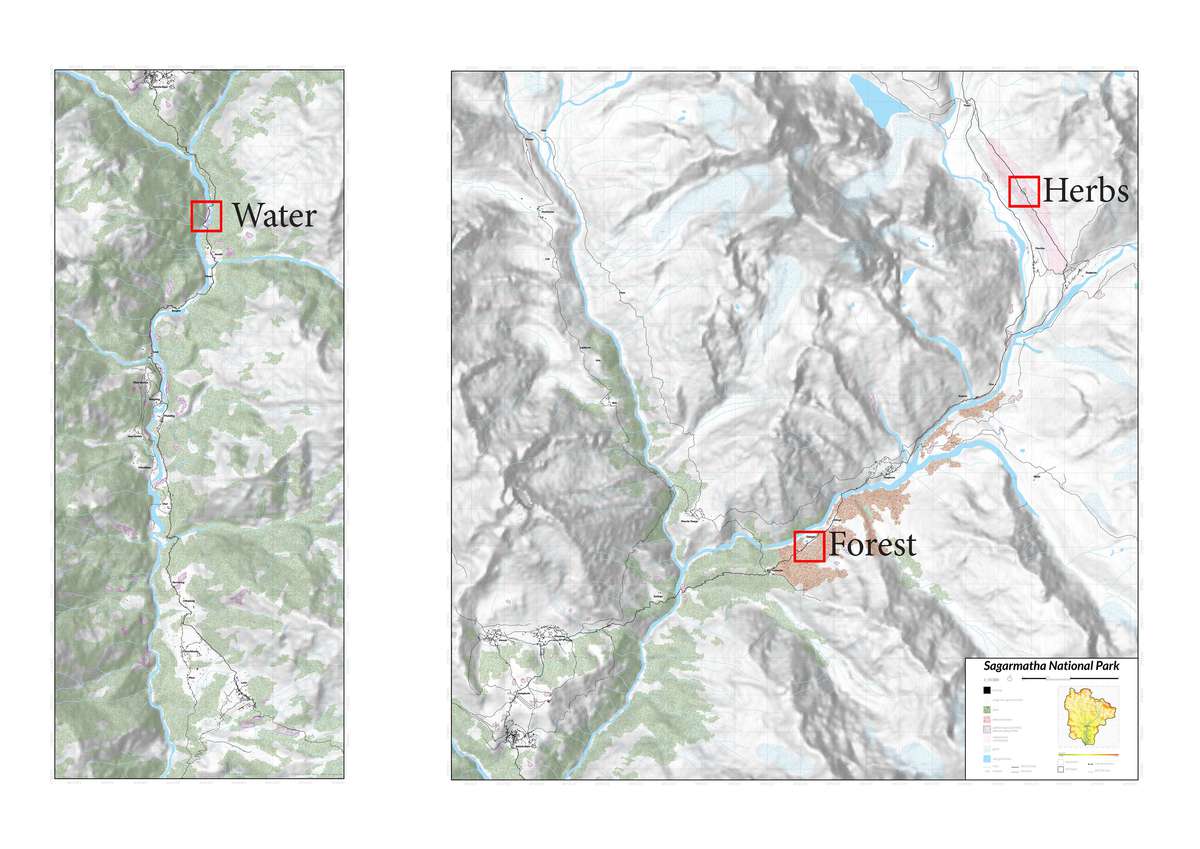
In order to demonstrate new strategies of development 3 sites were picked.
Nature and climate conditions- as well as altitude, landscape, and built environment, differ dramatically from site to site.

In the core of my interests are three main categories - nature conditions, local culture life cycle, seasonal tourism cycle.
By intersecting them we can derive program needs of local communities as well as tourists and create scenarios where the cultural exchange between locals and foreigners take place and aiming to benefit the locals and tourists alike.
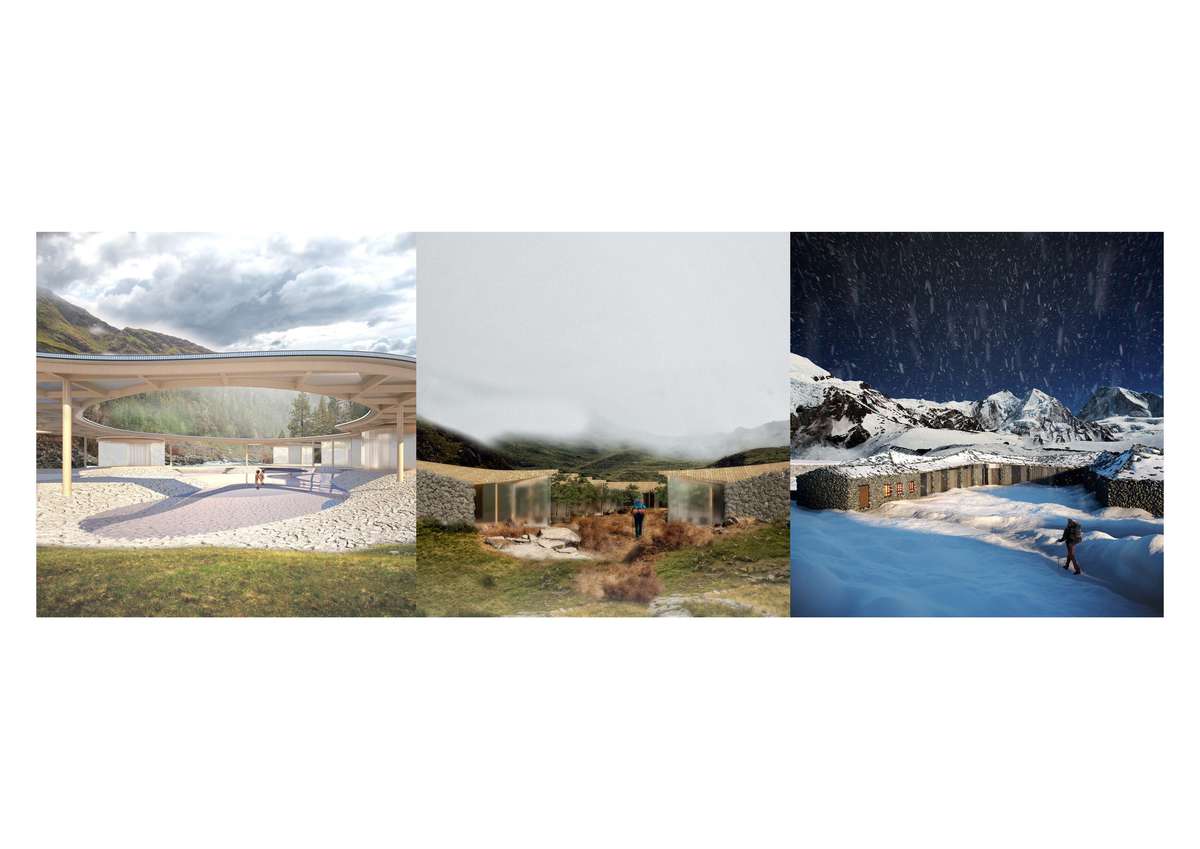
All three sites are built with the use of local materials and traditional techniques and process. All three use unique local conditions in order to create pilot projects, which later can be used as a framework for further development along the route, and other high-altitude hard reachable regions around the globe.
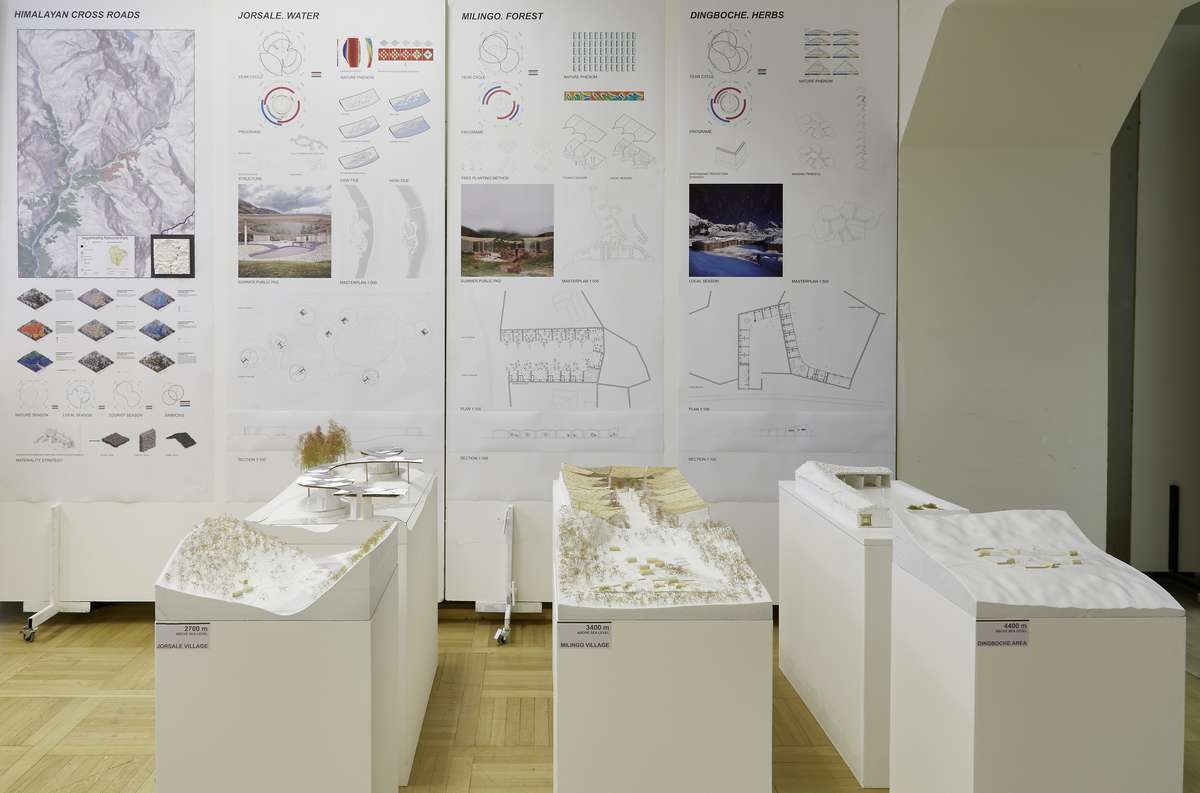
What will happen when there is no more space to expand and grow?
Proposal investigates the possibilities of alternative ways of development, where economic growth is not the main force anymore.
Himalayan crossroads
Himalayan crossroads

- Systemic changes
We live in an era where places considered virtually unreachable 60 years ago now can be reached in a matter of days. The world becomes small and homogeneous.
Sagarmatha National Park in Nepal is home to the highest peak in the world, Mount Everest. The 65-kilometer trek route to the Everest Base Camp has become a major tourist attraction drawing tens of thousands of people every year. However, this rise in popularity has triggered a change in the traditional lifestyle of local communities. The previously self-dependent and self-sufficient villages along the route, have turned into resting places for tourists.

Flat terraces are literary main wealth here. Traditionally locals used to grow rice and potatoes here, but now they are occupied by hotels designed to accommodate visitors. Full during the high tourist season - between October and December, and February and May - for the rest of the year all these hotels stand empty.
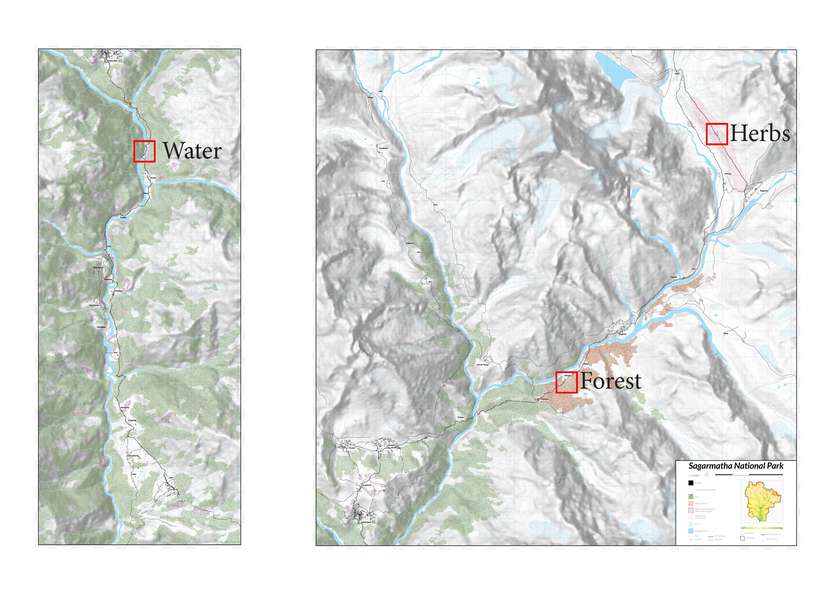
In order to demonstrate new strategies of development 3 sites were picked.
Nature and climate conditions- as well as altitude, landscape, and built environment, differ dramatically from site to site.
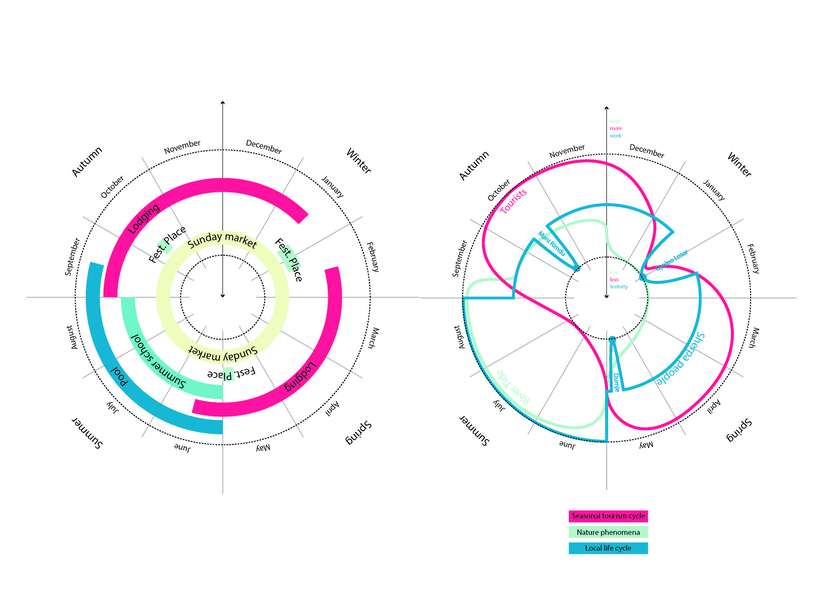
In the core of my interests are three main categories - nature conditions, local culture life cycle, seasonal tourism cycle.
By intersecting them we can derive program needs of local communities as well as tourists and create scenarios where the cultural exchange between locals and foreigners take place and aiming to benefit the locals and tourists alike.

All three sites are built with the use of local materials and traditional techniques and process. All three use unique local conditions in order to create pilot projects, which later can be used as a framework for further development along the route, and other high-altitude hard reachable regions around the globe.
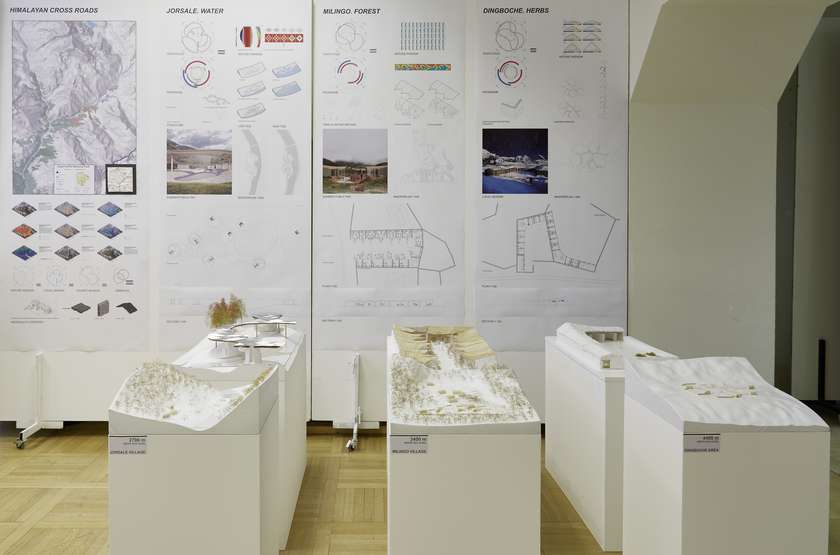
What will happen when there is no more space to expand and grow?
Proposal investigates the possibilities of alternative ways of development, where economic growth is not the main force anymore.